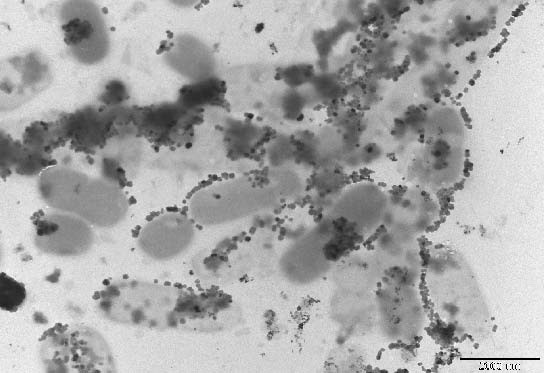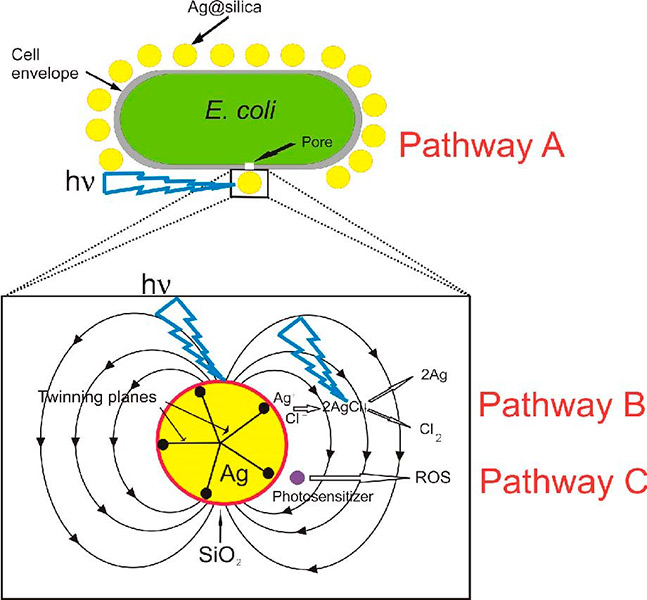- Universitat de València
- Fuertes Vives, Gustavo
- Salgado Benito, Jesus
- PDI-Catedratic/a d'Universitat
- Abargues Lopez, Rafael
- PDI-Prof. Permanent Laboral Ppl
- Martinez Pastor, Juan Pascual
- PDI-Catedratic/a d'Universitat
- Director/a d' Institut Universitari
- Ernesto Jimenez Villar
- Esteban Pedrueza Villalmanzo
The selective and efficient induction of cell death is among the most promising biomedical applications of nanoparticles (NP). Silver, a metal often employed for the preparation of NP, has been used for centuries as an antibacterial agent, and it is still employed today for preventing bacterial infection or as coating of medical devices. Although the toxic mechanisms of silver are still unclear, they can be expected to be greatly improved in silver NP, due to their large surface area and high reactivity compared to the bulk solid. In fact, the antibiotic effects of bare silver NP have already been reported, with successful applications as effective antimicrobial coatings or in water sanitization filters.
Researchers from University of Valencia have developed a new type of silver nanoparticles coated with a silica nano-shell, able to exert selective killing of bacteria by irradiating at their surface plasmon frequency. The nanoparticles bind readily to the surface of bacteria without affecting their growing, since the toxic silver core is covered by the inert silica shell. Upon exposure to light corresponding to the absorption band of the silver nanocore, bacterial death is triggered effectively and selectively, most likely due to the enhanced electromagnetic fields in the nanoparticle proximity.
The main application of the technology is in biomedicine, in phototherapy methods for the treatment of infectious illnesses through the inducement of cell death.
The most remarkable advantages provided by this technology are:
- Photoswitchable toxicity, allowing the inducement of cell death upon proper irradiation at a specific length wave.
- Low power of radiation needed to induce cytotoxicity, so cell death may not be due to thermal effects.
- High level of interaction with biological materials, like bacterial cells, due to the large surface area and high reactivity of the nanoparticles.
- Patent granted
Blasco Ibáñez Campus
C/ Amadeu de Savoia, 4
46010 València (València)














